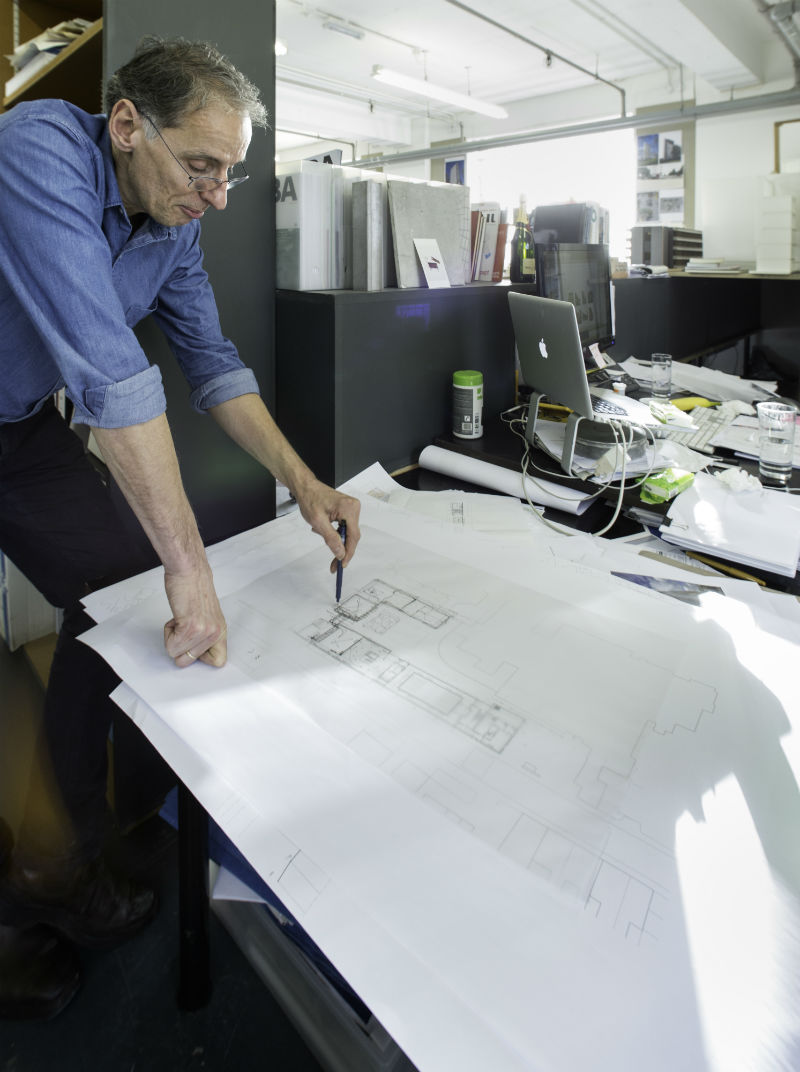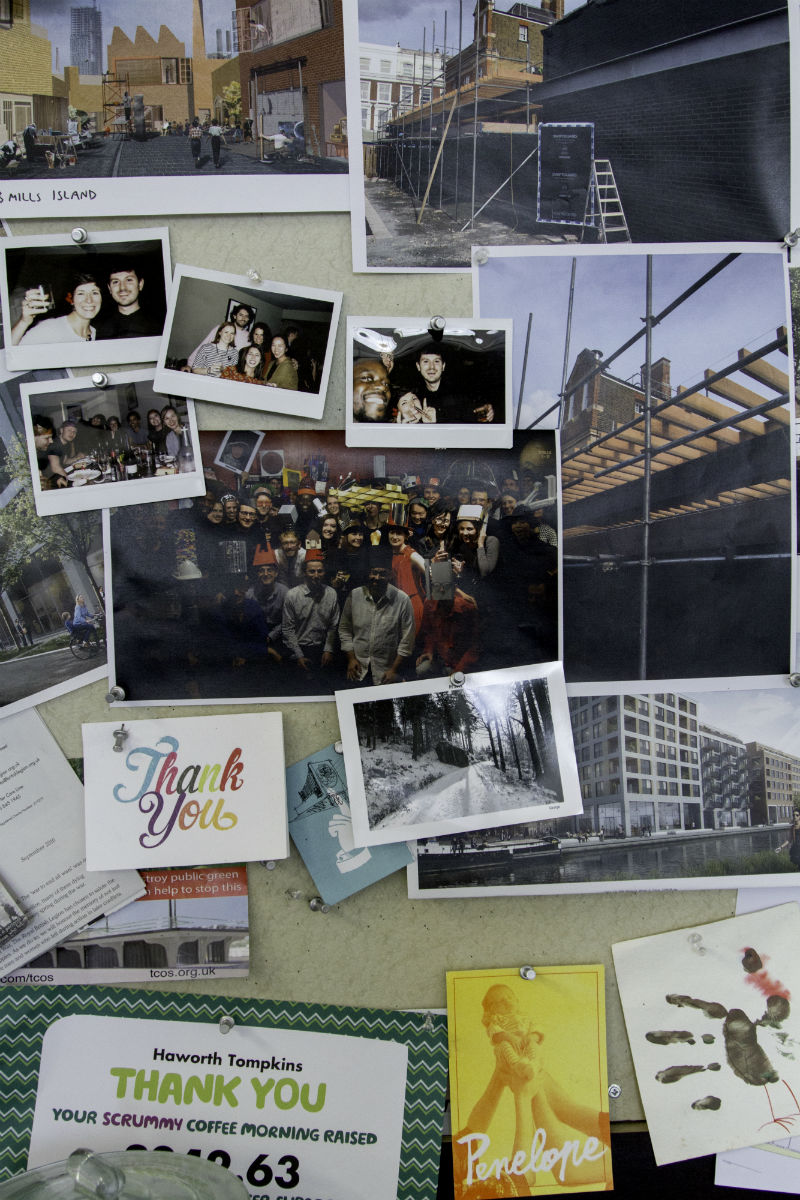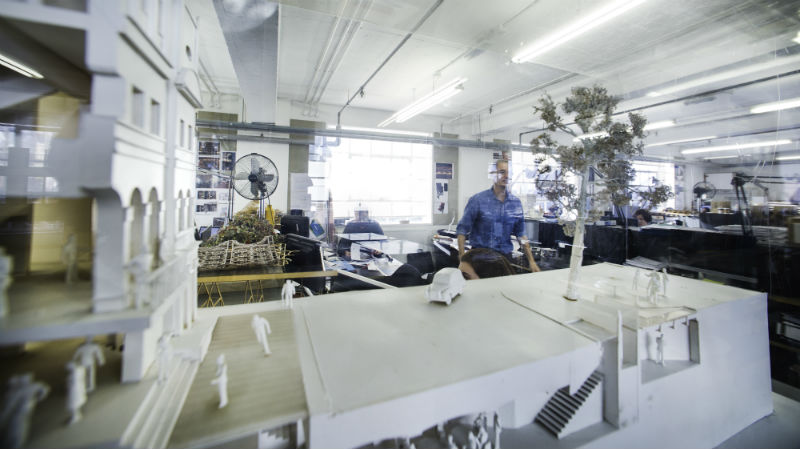Haworth Tompkins - Practice Role Model
Encouraging constructive criticism and creativity
When you feel like you’re just about in control of an incredibly energetic, gobby, awkward but unbelievably creative studio, that’s exactly what you want. If people can’t say what they think – however junior they are - then what’s the point?
Having an ongoing constructive critique of who we are, what we do and why is the lifeblood of the practice. It always has been.
Prioritising diversity and developing a socially inclusive workplace
We originally set up the studio because we thought architecture could make the world a better place and be done in a better way. Being diverse and inclusive is integral to realising that ambition. Whilst we know diversity brings competitive advantages, to us it is about far more than that.
We’re not there yet but we want to try to be as representative as possible of the people we are designing for and know that bringing different experiences to the design discussion enhances creativity.

We have set up a working group who are specifically tasked with being self-critical about our efforts around inclusion. They help us to ask uncomfortable questions and hold ourselves to account. It’s all very well being a tight working group but that can’t mean that we only ever recruit people we think are like us.
Social mobility remains a major issue for architecture, especially given the high fees and length of training. To try and extend the ladder to students, we actively support the Stephen Lawrence Charitable Trust and the Social Mobility Foundation and provide workplace schemes for London-based schools and paid internships. We’ve taught in institutions such as the University of Greenwich, which have more mature students, a more ethnically diverse intake and a lot more part-time students coming through unconventional routes. We don’t want to disincentivise white, middle-class, affluent people but they will find us, others won’t.

We also look beyond the studio to get guidance from people we think are further down the line with diversity than we are, such as the Young Vic theatre. They are an important past client and we now sit on their board of trustees. Our ongoing relationship enables us to tap into advice about how we can make our recruitment processes more inclusive, transparent and objective.
Looking outwards and collaborating
This willingness to look outwards is characteristic of the practice and drives our innovation. Our working processes are enriched by collaborations with artists such as Martin Creed, Nathan Coley and Antoni Malinowski. Similarly we exchange ideas through competitions, lecturing, academic forums and sitting on design panels. We also have a habit of extending our creative relationships with clients and go on to become professional friends, advisors or trustees long after buildings are complete.
Attracting and motivating talent by having social purpose
The choice that young talented architects have is enormous. We hope one of the reasons they choose to join us is because of what we stand for as a practice. We try to recruit people who have a wider sense of values, rather than just red-hot designers. We’ve grown this professional family in a careful and gradual way; it’s the equivalent of slow food – it has acquired texture, depth and density through collective effort.

We treat our people well and have relatively little churn. There is this pernicious, persistent myth that you have to slog your guts out to make it as an architect.
We believe that people shouldn’t be putting their lives on hold to succeed in this profession. If they have kids, caring responsibilities or other things going on that require flexibility, we work with that.
We want our architecture to have maximum social benefit and put our energy into projects that will serve as many people as possible. That could be by working pro bono with communities in Jordan, Bosnia and South Africa, by helping Christchurch to rebuild after the earthquake, or advising the Dot Dot Dot ethical property group. Equally it could be about providing a place of delight that the public can enjoy, or making people’s homes that much better.

We are not commercially naïve and recognise that we can’t go bankrupt because we love our projects to death. It is an ongoing experiment to try and strike the right balance.
But we have found that if we stay focused on our social purpose it is an incredibly motivating and uniting force within the practice.
Being a role model means… naming your fallibilities and asking tough questions
The legacy of a practice has to be bigger than a monograph of its work.
We accept that we have a certain profile as a mature studio and need to do something with that. We are by no means perfect and we often get things wrong but perhaps a role model practice is one that’s sufficiently self-aware to name its fallibilities.
There are so many live issues that face us all, from how we mitigate climate change, or provide decent housing for all, through to questions about how we maintain fee levels and support younger practices.
Within the practice we rigorously question ourselves about what we should be doing and where the right path lies in an increasingly complex and pressurised society.
It’s a debate we would like to extend into the wider profession.
Haworth Tompkins is one of nine Practice Role Models which represent our vision of what it means to be a successful RIBA Chartered Practice. Find out more about the Practice Role Model project and the other eight practices.







